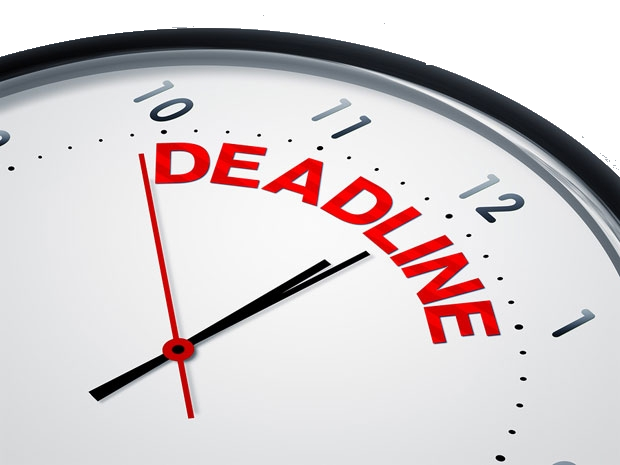What is meant by ‘competition’ in the economy? Is it always desirable?
Topic: 2. What is meant by ‘competition’ in the economy? Is it always desirable?
Order Description
This Essay requires research and the development of analytical skills.
It is a more substantial piece of work of 2000 words (not less than 1900 and definitely not more than 2100) plus a list of references used in preparing your essay.
The essay must compare TWO different schools of economic thought.
Your essay should consider and compare the distinctive position on your chosen topic of two different schools of economic thought e.g. classical, Marxist or neoclassical. Each of these schools of economic thought has a distinctive position on each topic. It is important to explain these differences between the different schools of economic thought and to try to assess which of them is more useful in answering the question.
You also need to draw on at least FOUR scholarly works (NOT newspaper articles). This means that the task is largely based on your application of critical analysis but it also requires you to undertake a modest amount of research into published work on the topic. Of course, you are encouraged to read as broadly as you like in preparing your essay and refer to a wider range of references: what is indicated here is just the minimum requirement.
It is suggested that you draw upon the readings listed for the lectures and tutorials as well as the additional readings list which you can find here.
A systematic structure to your essay is important.
One that you might consider is as follows: (i) introduction, (ii) a brief summary in your own words of the view of one school of economic thought on the topic, (iii) a brief summary in your own words of the view of another school of economic thought on the topic, (iv) a discussion of common features, if any, in the views of the two schools, (v) a discussion of differences between the positions taken by the two schools, (vi) some consideration of other related issues arising from your wider reading, and (vii) conclusion, summing up your essay and giving your overall judgement on the arguments you have reviewed. That structure is illustrative, not mandatory.
An alternative way of structuring the essay, for example, would be to identify the key themes on the topic quite early in the essay and then go on to compare and contrast how two schools of economic thought contribute to debate on the themes of the topic.
You might also draw in examples or evidence that you think help to illustrate, prove or disprove the points made by the articles you are reviewing. Some ‘real world’ illustrations of the issues you are discussing will make your essay significantly more interesting both for you and the reader.
Important: The essay provides an opportunity to develop your understanding of topics in political economy. There are no ‘right’ or ‘wrong’ answers for an essay like this, although you must be careful to explain the alternative viewpoints accurately and systematically. You must be selective in drawing from your reading only those aspects that are directly relevant to the particular question. You should try to write a carefully reasoned essay.
Care is needed in preparing and writing the essay. It is a research task and cannot be done properly by relying only on textbooks. You can make a start by looking at relevant chapters in the two textbooks recommended for this Unit of Study. But you must move beyond those to a process of library searching for material that will give you different insights.
It is your interpretation of the material that matters. Of course, markers recognise that you will not be able to cover everything in 2000 words – part of the skill of essay writing involves the intelligent selection of material.
Adherence to quite strict rules about referencing is required for essay writing at university level. You must include a list of all the references you use to write your essay. You are also required to note the source of arguments and data you use in the text of your essay, where applicable. Plagiarism is not acceptable under any circumstances.
ECOP1001 ECONOMICS AS A SOCIAL SCIENCE
GUIDE TO WRITING ESSAYS IN POLITICAL ECONOMY
1. INTRODUCTION
An essay is an exercise in individual expression, and the following comments should NOT be taken as
describing an idealised “blueprint”. Rather, they are aimed at specifying some general objectives
and conventions which should be borne in mind when preparing essays. Within this framework
there remains considerable scope for the development of your own personal style.
2. PREPARATORY READING
Preparing an essay is a research task. It cannot be done by relying only on the material in the
textbooks. It is also expected that University essays will show more sophistication than work done in
secondary school. You should not be satisfied with high school texts as reference sources.
It is normal to read some journal articles and/or chapters from books before writing an essay.
Sometimes references will be suggested by lecturers. On other occasions no references will be
specified, in which case a starting-point could be the suggestions for supplementary readings in the
course handouts. The important point to emphasise here is that on all occasions you should browse
through the library for potentially relevant material. Thus, even when some references are
suggested, it is best to look for other sources. Otherwise your essay is likely to be a dull affair, of
little interest either to you or others reading it.
Books and journal articles should be the principal sources for researching your essay. In hunting out
material, the obvious procedure is to consult the on-line catalogue in the library by subject and
keyword. Reference can also be made to an index such as the Journal of Economic Literature, and
the Australian Public Affairs Information Service (APAIS). While the use of newspaper articles (e.g.
The Australian Financial Review) is legitimate, such references should be used sparingly and mainly to
complement academic sources and information from the internet (see also section 15).
You should remember that your own judgement is of crucial importance.
3. WRITING A DRAFT
There are various opinions about the best method of synthesising your own views with the
knowledge culled from reading the works of other authors. Some contend that you should not begin
writing the essay until you have read and taken notes on a number of books and articles. Others
contend that you should write an early draft, then read further books and articles, and modify the
earlier draft in the light of this reading. Which method is best depends on the nature of the topic
and your familiarity with it, and partly on personal preference. However, it is generally a good idea
to begin fairly early in writing a draft or at least an outline structure of the essay. This process forces
you to develop your ideas and a conceptual framework. Further reading can then be interpreted in
the light of your framework. Your framework can be modified if necessary. If you read too many
references at first, assimilation and coordination of ideas becomes very difficult, and you may end up
with an essay full of disconnected points.
4. RELEVANCE
Of course, an essay MUST be relevant to the topic set. Equally important, it should be demonstrated
Page 2 of 9
to be relevant, in the sense that the analysis must be explicitly applied to be specified question.
Particularly undesirable is the tendency of some students to see a particular phase in the question
(such as “monetary policy” or “enterprise bargaining”) and then to write down everything they know
on the subject.
5. QUOTATIONS
An essay ought not to be merely a summary of ideas from a handful of references. In particular an
essay should not be constructed around a series of quotations from previous authors, even if the
quotations are acknowledged. It is your essay and it should be based on your assessment of the
topic in question. Regarded in this light, quotations from other works should be ONLY introduced as
supplementary evidence to illustrate your research and analysis.
If you do quote another author, you must provide not only the name of the author, but the year the
work was published, and the page number on which the quoted text can be found. For example:
“……….” (Stilwell 2012: 23). See sections 10 and 14 for more details on referencing.
6. ORGANISATION
Clear and logical organisation is a characteristic of every good essay. An unsystematic presentation
suggests you are not capable of arranging your thoughts in an orderly fashion. Conversely, a well
organised answer suggests the ability to deal systematically with the topic. This would probably
involve sub-sections (perhaps with sub-headings), emphasising the key points and their relationship.
Many students fail to carry out this relatively simple yet productive step, and they lose marks
unnecessarily.
A well organised essay might take the following form:
(a) Introduction. Essay topics are often open to several interpretations so it is useful to give an
indication of the approach you are taking at the outset. This will largely determine the
balance of the essay and will help to demonstrate the relevance of the subsequent
argument. The introduction should alert readers to the path along which you will be taking
them. The emphasis should be on ‘scene-setting’ and on raising the key issues rather than
on your conclusions.
(b) The main body of the essay. Here the principal emphasis should be on the systematic
development of the argument and consideration of counter-arguments. On almost every
topic there are a number of different views; it is best to consider the various alternatives at
an early stage of the essay and to outline their relative strengths and weaknesses. On topics
which are amenable to empirical investigation, it is normal to summarise the existing
evidence and consider how much support it lends to the proposition(s) you are advancing.
Depending on the nature of the topic, you may have some new arguments or evidence to
contribute yourself.
(c) Conclusion. It is normal to bring the various strands of argument together in a brief
conclusion in order to round off the essay. (Of course, you may conclude that the balance
of argument and evidence prohibits a clear conclusion).
7. PARAGRAPHS
Confine each paragraph to a single idea but not so narrowly that paragraphs become one or two
sentences. For example, the single idea might be “Expansionary fiscal policy can help to reduce
unemployment”. The paragraph would go on to say what fiscal policy is, why it might generate jobs
Page 3 of 9
and what obstacles may need to be faced.
A useful exercise, when you have finished the first draft of an essay, is to see if each paragraph can
be summarised by one sentence and that they form a clear sequence for the whole essay. If not,
some reconstruction of the essay is probably needed.
8. LENGTH
A maximum length will be specified for each essay. This is not only to make the task of the marker
manageable, but also to provide practice in writing concisely. You should not exceed that length.
Generally, essays that are more than 10% below or above the required length will incur a mark
penalty.
9. GRAMMAR, PUNCTUATION AND STYLE
Proper grammatical construction and careful punctuation is essential for an effective essay. How you
express your ideas is just as important to your mark as the content of your essay. This requirement
takes time. It will usually mean rewriting and checking of sequential essay drafts in order to get a
carefully polished final version.
It is also important to develop your own clear and effective means of expression. This inevitably
involves some emulation of that which you read, but the process should be critical and selective.
Above all, express your points as simply as possible. Split up unnecessarily long sentences into
shorter ones. For example, instead of saying ‘however’ in the middle of a sentence, use it to begin a
new sentence.
10. CITATION, PARAPHRASE AND PLAGIARISM
Your essay is likely to draw on empirical evidence or particular arguments developed by other people
(e.g. “J.M. Keynes emphasised that profit expectations are volatile”). In all of these cases you must
clearly cite the source you have used (see section 14 on bibliographical methods).
A related matter concerns methods of paraphrase. Paraphrase is the process of summarising
arguments you have read in books and articles. Many students copy selected phrases and sentences,
and intersperse them with a few words of their own. The main objective would seem to be to
disguise the theft! This is to be avoided: it may be considered as plagiarism. A good paraphrase
requires that you reflect on what you have read and write your interpretation wholly in your own
words.
Of course, plagiarism – copying from other works without acknowledgement – is totally
unacceptable. Intentional plagiarism is deceitful: it is a violation of the educational process.
Unintended plagiarism may also occur if you are inexperienced in essay preparation. To avoid
plagiarism, a good piece of advice is not to write with a book/journal/website open: otherwise there
is a strong tendency to reproduce the author’s words rather than your own. So read, close the
book/journal/website, and then write. Of course, you can then go back and re-read, repeating the
process, if this helps your understanding. Further, if you make notes from a source before you start
drafting your essay, you must be careful to be clear in your notes about what, if anything, you have
copied down word-for-word. If you do copy anything word-for-word, make sure that you put quote
marks around these words, and note down the page number, author etc so that you don’t
unintentionally put a phrase, or sentence, written by another author in your essay with appropriately
referencing your essay. You must never download material from a Web site and cut-and-paste to
form part of your essay.
Page 4 of 9
The official policy of the University of Sydney is that essays containing plagiarism (intentional or
accidental) will be referred to the Head of School for disciplinary proceedings. You should study the
plagiarism examples below very carefully, so that you are very clear about what constitutes
plagiarism, and how to avoid it.1
PLAGIARISM EXAMPLE NO.1 : Use of verbatim (word-for-word) quote with no quote marks, and no
citation
Source text:
“A self-regulating market demands nothing less than the institutional separation of society into an
economic and a political sphere” (Polanyi 2001: 74).
Plagiarism in student essay:
A self-regulating market demands nothing less than the institutional separation of society into an
economic and a political sphere.
Not plagiarism:
According to Polanyi (2001:74) “a self-regulating market demands nothing less than the institutional
separation of society into an economic and a political sphere”.
PLAGIARISM EXAMPLE NO.2 : Verbatim quote with no quote marks; acknowledgement of author,
but no year/page no details of quote
Source text:
“A self-regulating market demands nothing less than the institutional separation of society into an
economic and a political sphere” (Polanyi 2001: 74).
Plagiarism in student essay:
Polanyi argues that a self-regulating market demands nothing less than the institutional separation
of society into an economic and a political sphere.
Not plagiarism:
Polanyi (2001:74) argues that “a self-regulating market demands nothing less than the institutional
separation of society into an economic and a political sphere”.
PLAGIARISM EXAMPLE NO.3 : Appropriate citation, but use of verbatim quote without quote
marks
Source text:
“A self-regulating market demands nothing less than the institutional separation of society into an
economic and a political sphere” (Polanyi 2001: 74).
Text in student essay:
Polanyi (2001: 74) argues that a self-regulating market demands nothing less than the institutional
separation of society into an economic and a political sphere.
Not plagiarism:
1
These plagiarism examples are adapted from materials originally developed by Dr Damien Cahill in 2010 for the course ECOP1004
Economy and Society.
Page 5 of 9
Polanyi (2001: 74) argues that “a self-regulating market demands nothing less than the institutional
separation of society into an economic and a political sphere”.
PLAGIARISM EXAMPLE NO.4 : Appropriate citation, but lack of quote marks – the changing of the
word “demands” to “requires”, and leaving out the word “institutional” does not negate the need
for quote marks
Source text:
“A self-regulating market demands nothing less than the institutional separation of society into an
economic and a political sphere” (Polanyi 2001: 74)
Text in student essay
Polanyi (2001: 74) argues that a self-regulating market requires nothing less than the separation of
society into an economic and a political sphere.
Not plagiarism
Polanyi (2001: 74) argues that “a self-regulating market” requires “nothing less than the institutional
separation of society into an economic and a political sphere”.
PLAGIARISM EXAMPLE NO.5 : Not plagiarism, as the student essay contains the appropriate
citation, and uses quote marks where appropriate
Source text:
“A self-regulating market demands nothing less than the institutional separation of society into an
economic and a political sphere” (Polanyi 2001: 74)
Text in student essay, not plagiarism:
Polanyi (2001: 74) argues that capitalism leads to an “institutional separation of society into an
economic and a political sphere”.
11. DEFINITIONS
Most essay questions require some terms to be defined. This should be done as early as possible; a
series of definitions is not an essay. Moreover, you can normally assume that the reader has some
knowledge of the subject. Thus, it is not usually necessary to define basic concepts; whether you
understand them or not will be clear to the reader by the way you apply the concepts to the
question. The general rule here is “don’t be pedantic”.
12. DIAGRAMS, MATHEMATICS AND STATISTICAL TABLES
Some parts of economic theory use mathematical and diagrammatic presentation. Where you
consider this to be useful you may introduce maths and/or diagrams into an essay. The main point
to stress in this regard is that the relevance of such material should be explicitly pointed out in the
text of your essay. The same applies to tables of statistical data. If their relevance is not
demonstrated then maths, diagrams and tables add nothing to the essay.
13. A POLITICAL ECONOMIC ANALYSIS
A political economic approach makes certain demands that are not made in other approaches to
writing. Here are three examples which do not satisfy these demands:
Page 6 of 9
1. “Tariffs went up in the 1920’s”. This is true, but if it is left at that it doesn’t inform
the reader of the process by which the decision was made to raise tariffs. Who
made the decision, under what circumstances and under what pressures?
2. “Australia’s high tariffs should be reduced in order to make industry more efficient”.
Such a statement is naive unless the context also shows an understanding of the
historical reasons for high tariffs in Australia, and the political and economic
difficulties of implementing such a policy.
3. “Rapacious multinational companies are exploiting third world economies”. Maybe,
but polemics are no substitute for arguments and evidence in a university essay.
Ultimately, the aim of a political economic approach is to attempt to understand economic events
in their social context. For example, you might ask questions like: How has the economic analysis
been influenced by a political position or by particular assumptions about society? What are the
groups with vested interests in a certain event? What is the balance of forces leading up to a
particular outcome? Who wins and who loses? You should also aim to provide evidence to
substantiate or illustrate your argument.
14. BIBLIOGRAPHICAL METHODS
References to all your sources should be acknowledged, whether explicitly quoted or not. Also, a
complete list of publications to which reference is made should be appended to the essay. Note:
This reference list is NOT included in the required word limit for an essay. There is no hard-and-fast
rule about the number of references which should be consulted and listed. As a rule of thumb, less
than half a dozen is definitely too few for a full length essay. What is appropriate depends on the
nature of the topic. It is not legitimate to ‘pad’ the list with works your have not consulted: markers
can usually identify where this is done and will reduce the marks given for the essay.
There are a number of methods for handling bibliographical matters. Whichever you choose, you
must be consistent. Some University departments recommend the Oxford system, which requires
footnotes giving full detail of each reference cited and the repetition of all those details in the
bibliography. The simpler method is the Harvard system and this is what you should use for essays
for this and other Units in Political Economy. This system requires you to prepare a complete
reference list of all works cited, and to refer to each in the text by its author and date. Thus a
segment from the essay might appear as follows:
“The empirical evidence suggests that many firms can be relocated without any loss of
profitability, as noted by Cameron and Clark (1996: 48). However, Archibald (2001: 72)
argues that the effects on employment in the recipient region may be relatively minor
because of the low value of regional multipliers”. (Note: An alternative form of the Harvard
system would cite the references in the preceding paragraph as follows: Cameron and Clark
(1996, p.48) and Archibald (2001, p.72).)
Then, at the end of the essay, put the heading References and list all references cited in the text of
your essay alphabetically by author family name, as follows:
Page 7 of 9
Archibald, G.C. (2001), ‘Regional Multiplier Effects’, Oxford Economic Papers, 25 (2): 22-45.
Cameron, G.C., and Clark, B.D. (1996), Industrial Movement and the Regional Problem,
Edinburgh: Oliver and Boyd.
NOTE: In the case of a book the information given is as follows:
(i) author’s name and initials, (ii) year of publication (in brackets), (iii) title of book (in italics or
underlined), (iv) place of publication, and (v) publisher’s name.
For example: Fusfeld, D. (2001), The Age of the Economist, Boston: Addison-Wesley.
In the case of an article, the information given is as follows:
(i) author’s name and initials, (ii) year of publication (in brackets), (iii) title of article in single
quote marks, (iv) name of journal (in italics or underlined), (v) volume and issue number (where
applicable), (vi) month (where applicable), (vii) page numbers of the journal.
For example: Hamilton, D. (2003), ‘The Case for Fair Trade’, Journal of Australian Political Economy,
48, December, pp.60-72.
In the case of a chapter from an edited book, the information is as follows: (i) name and initials of
the author of the chapter, (ii) year of publication (in brackets), (iii) title of the chapter in single
quote marks, (iv) name and initials of book editor(s), (v) title of the book (in italics or underlined),
(vi) edition number (if appropriate), (vii) place of publication, (viii) publisher’s name, (viv) page
numbers of the chapter:
For example: Jones, E. (1997), ‘Government Intervention’, in Argyrous, G. and Stilwell, F. (eds),
Economics as a Social Science: Readings in Political Economy, 3
rd edition, Prahran: Tilde University
Press, pp.29-31
Where reference is made to more than one work by any author in any one year, they should be
identified as follows: Brown, A., (1983a), Brown, A., (1983b), and so forth.
15. USING INFORMATION FROM THE WEB
Where information is drawn from the World Wide Web, the full website address (URL) should be
listed in your list of references, following the name of the author (where available) and title of the
item (in italics). You should also include the date on which you accessed the information.
For example: Argy, F., (2003) Achieving Equality of Opportunity, Evatt Foundation,
https://evatt.labor.net.au/publications/papers/96.html [Accessed 17 March 2007]
Note that information from the web may be of questionable validity, because it is not always subject
to the same professional checks as information in published books and journals. So this source
should be used sparingly. You can use Wikepedia for background research, and as a guide, if you
find it useful but you should NOT use it formally as a reference for your essay.
16. FOOTNOTES
Footnotes should be used sparingly, it at all, for points ancillary to the main argument. Some authors
use large numbers of footnotes but this practice should be avoided. If a point is not directly relevant
Page 8 of 9
to the theme you are developing in the essay it is usually better omitted. If it is important, then
develop it in the text of the essay.
17. BIBLIOGRAPHICAL TERMS (OPTIONAL)
For bibliographical material some abbreviation is possible by the use of Latin terms. The following
are some of the most common:
op.cit. means “in the work cited”. This can be used to refer to a work when it is cited for a second
or subsequent time in the essay, so long as there is no reference to other works by that
author in the meantime.
ibid. means “in the same place”. This can be used for immediately sequential citations to the
same work.
sic. means ‘so; thus; in this manner”. On occasion an error or peculiarity occurs in a passage
you wish to quote. So that this error or peculiarity shall not be thought a mis-type or misspelling,
(sic) can be inserted after the relevant work or phrase.
18. CHECKING
Always read through the final version of your essay before submitting it, to check that there are no
grammatical errors, punctuation problems or typographical errors. This is very important, because
failure to do so results in the essay appearing slip-shod and losing marks unnecessarily.
Keep both an electronic and hard copy of each essay before submitting it.
19. EVALUATION
Each essay will be evaluated according to the following criteria:
INTERPRETATION AND RESEARCH
1. Relevance of answer to question
2. Effective use of evidence
3. Critical use of scholarship
4. Extent of research
5. Development and originality of argument
PRESENTATION
6. Organisation and structure
7. Clarity and originality of expression (vs. paraphrase, summarizing)
8. Grammar, punctuation, spelling, proof-reading
9. In-text referencing, footnotes, bibliography
20. GRADES
Essays are marked out of 100.
85 and above denotes High Distinction. This requires consistently excellent standard according to all
of the various essay marking criteria listed above.
75-84 means the essay is of Distinction standard. This normally requires consistently very good
standard according to each of the above criteria.
Page 9 of 9
65-74 means the essay is of Credit standard. This normally indicates a consistently good essay, or an
essay that has some features that are very good but others that are only satisfactory.
50-64 means the essay is of Pass standard. This normally indicates a satisfactory performance
according to most of the above criteria, although some relatively poor features may be compensated
by other good features of the essay.
49 and below means the essay is a Fail. This is because of the presence of some poor or very poor
features of the essay, according to the above criteria. Students who fail essays may still pass the Unit
of Study if the low essay mark is compensated by good marks on other assessment tasks. However,
it does indicate the necessity to work hard on doing better essays in future. Learning from the
marker’s comments in conjunction with re-reading this handout is strongly recommended

 Our orders are delivered strictly on time without delay
Our orders are delivered strictly on time without delay  Our orders are delivered strictly on time without delay
Our orders are delivered strictly on time without delay 


